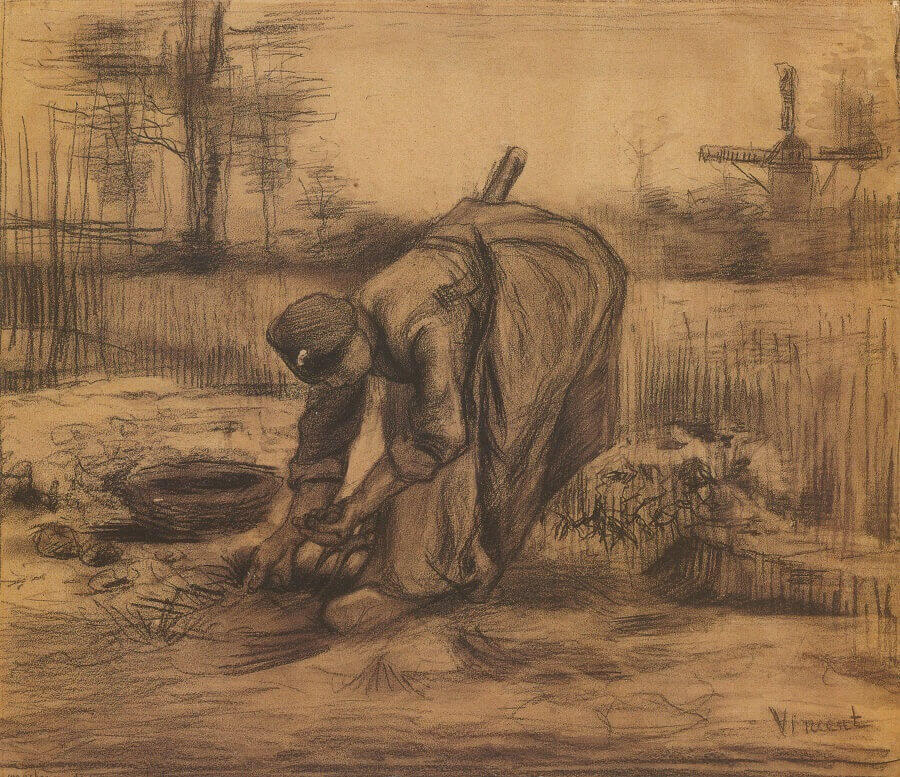Letter 07/01/1885 - by Vincent van Gogh

You may laugh at Gustave Courbet, who says, "Peindre des anges! Qui est-ce qui a vu des anges?" ["Paint angels! Who has seen angels?"] But I would like to
add more to that, e.g.: "Des justices au harem [the judges of the harem], qui est-ce qui a vu des justices au harem? Des combats de taureaux [fighting bulls], qui est-ce qui en a vu?" And so many
other Moorish, Spanish subjects, cardinals, and then all those history paintings, which still go on being produced, meters high by meters wide! What use are they all and what do they want with
them? They are mostly stuffy and dull when a few years have gone by, and become more and more boring.
Anyway, perhaps they have been beautifully painted, that may be so; these days when connoisseurs stand in front of a painting such as that by Benjamin Constant [Judges of the Harem], or a reception
of a cardinal by some Spaniard or other, it is customary to say something profound like "good technique." But as soon as these same connoisseurs are confronted with a scene of peasant life or a
drawing by, for instance, Raffaelli, they would with the same profound air start criticizing the technique.
You may think that I am making an unfair comment here, but I am so full of the fact that all these exotic paintings were painted in the studio. Just go out and paint out of doors, on the spot!
Then all kinds of things will happen. For example, from the four canvases that you are about to receive, I must have removed at least a hundred or more flies, to say nothing of dust and sand,
etc., and not forgetting that if you carry them across heath and hedges for an hour or two, you will get the odd scratch on them from a branch or so.
Nor should it be forgotten that when you reach the moors in this weather after a few hours walk, you are tired and hot. Nor do the figures stand still, like professional models, and the effect
you want to capture will be different as the day progresses.
I don't know how it strikes you, but as far as I am concerned, the more I work on it, the more the peasant life absorbs me.
I would be desperate if my figures were good; I don't want them to be academically correct. I mean that if you photograph a digger then he would certainly not be digging. I find figures of
Michelangelo wonderful, though they are a little too long in the legs, and the hips and buttocks too wide. In my eyes, therefore, Millet and Lhermitte
are true painters, because they do not paint things as they are, after dry analytical investigation, but as they, Millet, Lhermitte, Michelangelo, feel they are. My great desire is to learn to make
such inaccuracies, such deviations, revisions, changes to the reality, that they will become, yes, lies, if you will, but more valid than the literal truth. And now I must draw to an end; but I
wanted to talk to you about how those who paint peasant life or popular life, although they may not be classed as men of the world, in the long run will perhaps last better than the producers of
exotic harems or cardinals' receptions, all painted in Paris.




















